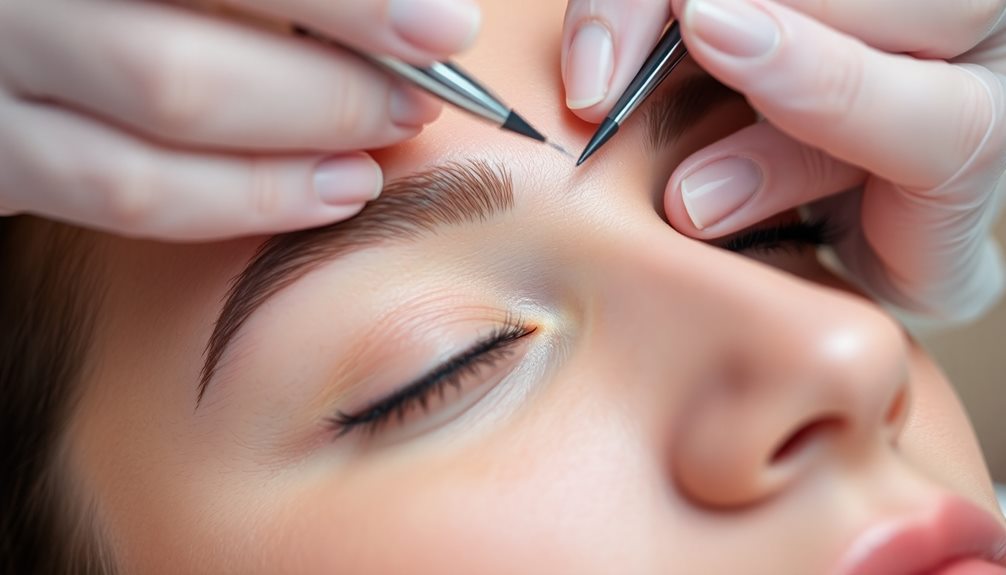Societal Relevance of Eyebrow Threading: A Deeper Examination at Heritage
Threading eyebrows, an ancient beauty technique with origins in historical practices, has gained popularity in recent years as a popular method for attaining well-defined eyebrows. jyotisalon involves using a thin thread to pluck hair from the follicle, resulting in clean lines and accurate shaping. While many people are attracted to eyebrow threading for its efficacy and the low discomfort it causes, the practice carries a rich cultural significance that goes beyond just looks.
Deriving in countries such as India, Persia, and the Middle East, threading has been a traditional hair removal method for centuries. It embodies not just a standard of beauty but also a shared cultural identity, passed down through ages. As more people become aware of its benefits and embrace it in different regions of the world, eyebrow threading serves as a bridge that connects individuals to their heritage while allowing for self-expression in their beauty routines. In this article, we will delve into the cultural significance of eyebrow threading and celebrate its timeless appeal in today's society.

Historical Beginnings of Eyebrow
Threading is thought to have originated in the Mideast and South Asia, with roots tracing back over a thousand years. Historic practices in these areas saw women using string to shape their eyebrows, a method that was often passed down through generations. This tradition was not just about appearance but also represented a type of cultural identity, demonstrating the skill and skill of those who practiced who mastered the art.
As this practice expanded, it developed into a social tradition, often performed in beauty shops and homes where ladies gathered to socialize. In the Indian subcontinent, for example, threading became a crucial aspect of bridal rituals, with brides receiving extra attention to their brows before the ceremony. The method was regarded as a way to improve aesthetics and refine the face, aligning with societal standards of womanhood.
In recent decades, eyebrow threading gained international recognition, particularly in Westernized countries, as a soft and precise substitute to different hair extraction techniques. This globalization of the practice saw it being adopted by diverse communities, highlighting the beauty of cultural while preserving its traditional importance. Today, threading represents more than just a beauty treatment; it embodies the deep histories and customs from which it originated.
Cultural Traditions and Importance
Threading eyebrows is deeply rooted in the cultural traditions of multiple regions, particularly in the Indian subcontinent and the Middle East. Historically, this method of hair removal is believed to have originated in traditional India, where it was employed not only for beautification purposes but also as a ceremonial practice. Families often transmit the art through generations, making it a valued craft that reflects cultural identity. The importance of eyebrow threading goes beyond appearance, signifying a link to tradition and community identity.
In many societies, eyebrow threading is intricately linked to womanhood and social status. Women often partake in this practice as a means of preparation for important life events, such as weddings or festivals. The process itself typically requires a skilled practitioner, known for their precision and craftsmanship, creating a serene and respectful environment. This collaborative experience cultivates a sense of belonging, where women come together to exchange stories and encourage one another while participating in self-care.
Moreover, eyebrow threading is increasingly recognized in contemporary beauty standards worldwide, transcending its cultural origins. Its rise in popularity has led to a fusion of cultural methods with current beauty standards. This mix showcases an growing appreciation for varied beauty practices and emphasizes the importance of maintaining historical heritage in a globalized context. As eyebrow threading becomes more widely accepted, it continues to celebrate its deep roots while adapting to the evolving landscape of beauty rituals.
Contemporary Adaptations and Movements
In the past few years, eyebrow threading has experienced a revival in popularity, particularly among younger generations who desire organic and exact grooming methods. Salons focusing in threading often merge classic techniques with modern styles to create a friendly atmosphere that attracts to a diverse clientele. The rise of social media has also had a significant role in popularizing eyebrow threading, with beauty influencers showcasing the craft of threading and its benefits through guides and transformation images. This visibility has sparked interest, transforming eyebrow threading into a highly desired beauty ritual.
Additionally, many beauty establishments are innovating by including threading as part of a wider range of beauty services. This adaptation reflects a growing understanding of the significance of keeping a cohesive beauty routine. Clients can now enjoy threading alongside services such as facials, waxing, and skincare appointments, creating a holistic experience that enhances personal care. Additionally, mobile beauty services have come forth, allowing professionals to deliver threading directly to clients at home or in convenient places, which highlights the versatility and availability of this classic practice.
Energy around sustainability and eco-friendliness has also impacted the eyebrow threading industry. More salons are utilizing organic threads and natural products to align with consumers' growing concerns about health and the environment. This trend not only encourages a more aware approach to beauty but also appeals with those who value responsible practices in the beauty industry. As eyebrow threading continues to evolve, it weaves modern values with its rich cultural roots, securing its place in contemporary beauty culture.